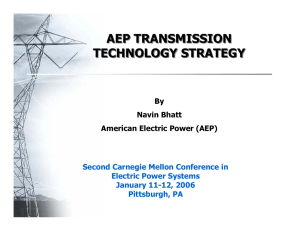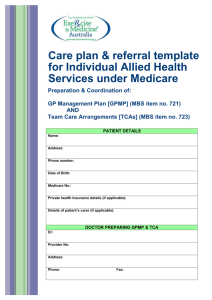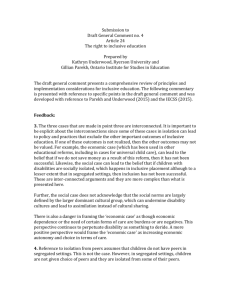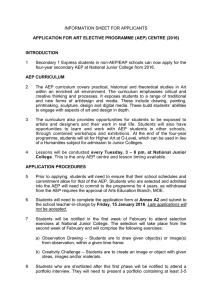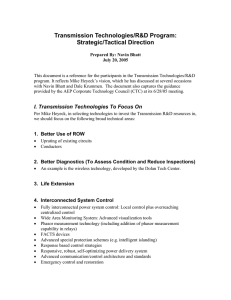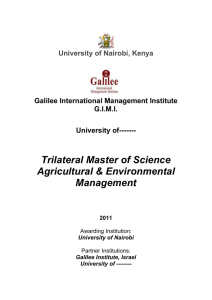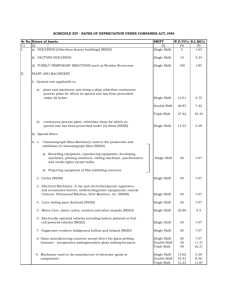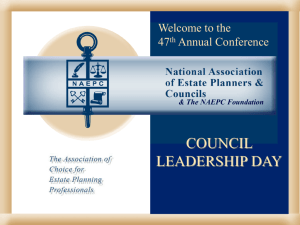ALT Ed Program Guidelines May2011
advertisement
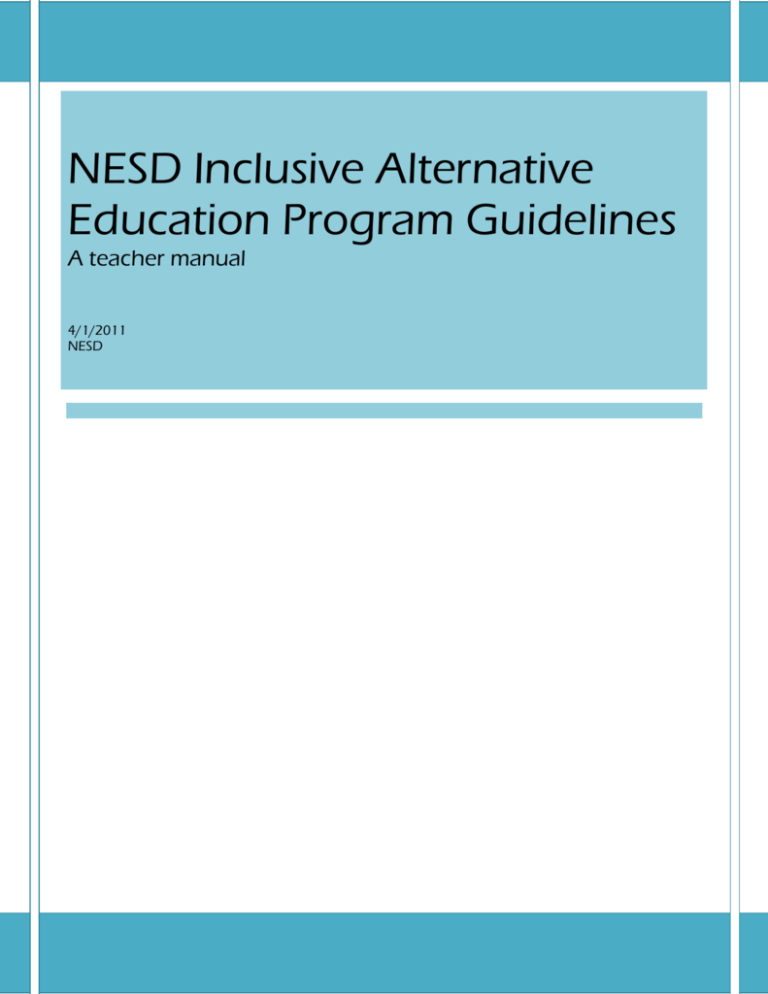
NESD Inclusive Alternative Education Program Guidelines A teacher manual 4/1/2011 NESD Inclusive Alternate Education Guidelines This manual has been created to assist you in providing quality instruction for AEP students in the regular classroom. Table of Contents Introduction .................................................................................................................................................... 3 General description of Alternate Ed ........................................................................................................... 3 Characteristics of students ............................................................................................................................. 4 Inclusive Practices ........................................................................................................................................... 5 Supports .............................................................................................................................................................. 5 Collaborative Team Approach ........................................................................................................................ 5 Strategies …………………………………………………………………………………..………………………………………….....................6 Materials ………………………………………………………………………………………………………………………………………….........6 Curriculum and Assessment…………………………………………………………………………………………………………..…… 7 Outcomes and Indicators………………………………………………………………………………………….….…………………..….7 Assessment ……………………………………………………………………….…………………………………………………………...........7 Acknowledgments: Sharon Hankins Helen Gress Katie White Cheryl Thacker Roberta Luchinski 2 Inclusive Alternate Education Guidelines INTRODUCTION General Description of Alternative Education Program (AEP) The alternative education program (AEP) course levels 18, 28, 38 have been developed for students who are between the ages of 14 and 18 who have experienced severe learning difficulties in past grades. They are at risk of failure in the regular education program and may be at risk for leaving school early. Students being considered for this alternative education program will be selected using careful analysis of: Educational history, including teacher reports, standardized testing results, and teacher observations Ability assessments completed within the past two years Family information, such as personal goals and aspirations of the student and parents. Preparing students for the world of work and independent living is the ultimate goal of the program. Graduation from an AEP does not qualify students for the majority of post secondary opportunities including technical courses. An Alternative Education Program should be considered for a student who: Is at least 14 years, 8 months old Has below average cognitive functioning Is significantly behind peers academically Has not experienced success in a Regular Education Program May have significant problems with attendance/motivation/work habits May be at risk for dropping out of school May require life skills and vocational training. Students registered in this AEP are required to take 8-10 classes per year. They earn credits at the 18-28-38 level. The students are expected to complete assignments, take exams, and participate in class in order to earn marks. A minimum of 50% is required to pass a class at the 18-28-38 level. Please remember, that passing an Alternative Education Program course is not the same as getting a credit in a Regular Education Program. A student who successfully completes the grade 10, grade 11, and grade 12 Alternative Education Program will receive a certificate. However, this certificate will not allow entry into most post-secondary institutions. 3 Inclusive Alternate Education Guidelines Characteristics of Students Who Are Enrolled in Alternative Education Programs Is at least 14 years, 8 months old o Parental involvement has been ongoing in placement and signed consent is in place. Has below average cognitive functioning o Considerable assessment has been done o Ability to understand abstract concepts may be impaired o Memory skills may be very weak o Problem solving ability are commonly weak o The ability to make good decisions is often very weak o These students typically require intensive assistance with new concepts Is significantly behind peers academically o Reading, Written Language and Math skills are typically in the Grade 4-6 level o Social skills may appear immature o Physical development is often at age level- interests and emotions are often typical to age peers o There may be significant gaps in acquired academic knowledge May have significant problems with attendance/motivation/work habits o Sometimes families are unable to give the support necessary for attendance and homework o Because these students find many things difficult it takes a lot of energy to do work others might find easy. o These students may easily become overwhelmed o Consider that attendance issues may be communicating frustration in class o These students may be at risk for dropping out of school These students typically require life skills and vocational training. o A Personal Program Plan is in place for all AEP Students o The Diversity Education Teacher leads the team in establishing, implementing and evaluating personal goals for the student. o Students may require additional help with personal care and safety concerns. o Time, measurement and money skills that most students will have learned may be missing. Typical Strengths o Can often follow established routines well o Often rely on visual supports o Can often work well when given patterns or steps to follow o Want to be liked and accepted by their peers and their teachers 4 Inclusive Alternate Education Guidelines INCLUSIVE PRACTICES Supports: 1. Collaborative Team Approach i. Regular team meetings are held to ensure ongoing communication between members of the student’s team. The core team must include the parent, the student (where possible), Diversity Education Teacher (DET), Classroom teacher(s), Educational Associate (EA), and Learning Consultant (LC). Other possible team members should be selected according to student need : At the school level: Differentiated Instruction Facilitators(DIFs), Outreach Workers At the division level: Counselling Consultants, Speech-Language Pathologists (SLPs), Occupational Therapist (OT), English as an Additional Language Consultant (EAL) Outside Agencies: Ministry of Social Services/Community Living Division, Mental Health and Addictions, Health, Justice and others. ii. The NESD values the use of co teaching to support classroom teachers with meeting the needs of diverse learners. For more information on co teaching, please see the Ministry of Education Literature Review on co teaching : http://www.education.gov.sk.ca/adx/aspx/adxGetMedia.aspx?DocID=190,211,1 07,81,1,Documents&MediaID=3782&Filename=Co+Teaching+Literature+Review+Anderson+2008.pdf iii. Diversity Education Teachers work with classroom teachers to plan, implement and evaluate PPP goals. The PPP provides much information about the student and will be shared with teachers. DETs help teachers problem solve through consultation and through classroom observation and co teaching. iv. Differentiated Instruction Facilitators are available in many schools to suggest and model teaching strategies that support inclusion. v. Learning Consultants are available to provide support on an ongoing basis, and may play a larger role where there is no DET in a school. vi. Referrals to RtI Problem Solving Teams are made to trouble shoot individual student problems that may create barriers to school success. 5 Inclusive Alternate Education Guidelines Strategies: Peer supports- teachers are encouraged to make use of flexible grouping for optimal inclusion of AEP students. Homogeneous groupings are preferred as this allows for modeling and for peer tutoring. It is important to make sure that group work is structured for student accountability and that all students have a meaningful role in the group work. Alternative Education Students benefit from listening to and observing their peers, and from being provided with models to follow. Visual Supports- Visual organizers and summary pages offer scaffolding to help all students achieve success. Charts, diagrams, photos, illustrations, video and multimedia supports are some examples. Texts should be kept brief and simple as well as at the student’s independent reading level for support materials. Auditory Supports- Amplification of the teacher’s voice where possible, improves success for all students. The use of auditory prompts and cues (such as intentional questioning) are helpful to students who require additional support. Concrete examples are also useful to help students understand concepts. Technical Supports- The use of multimedia supports learning for all students. Computer assisted learning may be used to provide extra practice as long as it is not exclusive. Consider using voice to text and text to voice applications (such as GoQ and Dragon Speak) to support students who have difficulty accessing and producing written language. Educational Assistant Support- AEP students sometimes have access to Educational Assistant support. Best practice involves the EA supporting the student’s inclusion in class and facilitating independence. This means that the student and the EA are not working together in isolation of other activities in the classroom. EAs may be used to help with other students allowing the classroom teacher more time for students with diverse needs. Materials: Resources for these students should be chosen to match the context of the curriculum and to maximize inclusion, but should be as close as possible to the student’s independent level. Resources may be drawn from lower grades, from the NESD Learning Resource Centre, from the WWW, or from local publications. Where possible, use resources that the student will need to be able to use after school completion is recommended (e.g. magazines, newspapers, movies, posters, schedules, forms, etc.) The DET may be involved in co planning units of study and in finding appropriate resources. 6 Inclusive Alternate Education Guidelines CURRICULUM AND ASSESSMENT Outcomes and Indicators: Renewed curricular outcomes are often suitable for all students. Learning and understanding are not absolute, but are on a continuum. The student’s ability to achieve along that continuum is commensurate to his/her ability. Students in an Alternative Education Program typically have difficulty with higher level thinking skills. Generally speaking higher level thinking tasks such as evaluate, analyze, interpret and apply may be minimized or removed for AEP students. In some cases alternative outcomes may be added to 18, 28, and 38 curricula. Choices may be removed or limited to allow the teacher to select strategies that will work for the student’s individual needs. Choice can sometimes be difficult for students in an Alternate Education Program. Indicators may be altered as needed by the classroom teacher to accommodate the learning needs of diverse students. There should be an understanding that the student’s level of achievement and understanding need to be the determining factors in indicators. Assessment: Students on Alternate Education Programs are enrolled in 18, 28, and 38 level courses. These appear on the reporting form and on all transcripts to clearly identify that this is not a regular program. While students in this program may be very weak compared to their regular peers, it is important that assessment and reporting reflect the individual’s learning in a way that builds confidence and self esteem. Rubrics for 18, 28 and 38 courses have been developed for you.While they may appear similar in wording to the regular course rubrics, please note that the criteria has been adjusted to better reflect the skills and abilities of a typical AEP student. 7


